Tweaked Nov 2011 to fix some old and broken links
The forgotten N96
As I mused earlier this week, there are some Nokia form factors which really shouldn't have been ditched - and the N95 8GB/N96 stands at the top of the list, with a lovely large and clear 2.8" transflective display, dual slide with sets of hardware multimedia controls, nice loud stereo speakers and, in the N96's case, kick stand, dual LED flash, hardware video decoder, 16GB internal flash memory plus microSD expansion and all the gadgets that many 2010 smartphones are only now coming with as standard.
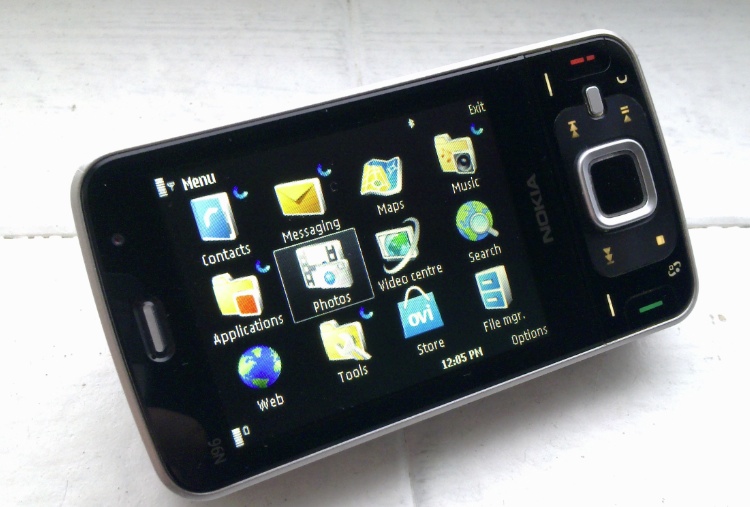
For 2008, the N96's specification was outstanding. And yet it sold only moderately and played to the tech press even worse. And even Nokia seemed to forget all about its existence remarkably quickly. Why? Here are some of the reasons, at least:
- the processor was underclocked, in a bid to keep battery life on the supplied 950mAh cell decent. It would have been far, far better to keep the processor speed up and simply put in one of Nokia's ever-so-slightly-thicker 1200mAh cells instead.
- the launch firmware was slow and buggy. Updates gradually appeared, but only improved the speed slightly. The last update was v30 in June 2009 and Nokia seems to have forgotten this device completely.
- as the very first S60 3rd Edition FP2 device, it had feet in both the FP1 and FP2 camp and some of the OS sub-systems have since proven to be incompatible with software that runs on other FP2 devices. Problems range from hardware issues to browser and font oddities.
- the camera software was messed up. Seemingly coming with the exact same star unit as in the N95, N82 and N95 8GB, videos were universally blurry and disappointing. A firmware update restored the preset focus of these previous models, but it's clear that it was a kludge and capture quality was never really as good.
- build materials. Everything about the N96 screams plastic - not necessarily a bad thing, but in this case the designers followed the modern trend for shiny black plastic, making the N96 an utter fingerprint magnet and something which always feels like it needs a good wipe-down. Far better was the matt, textured plastic used on the N95 8GB, N86 and other designs.
But, on the plus side, you can now pick up the N96 for £100 on eBay if you're careful, making it something of a Symbian 'retro' bargain. If you can live with its foibles - it's certainly tempting, especially if you can use all its multimedia features.
Firmware
Before going any further, make sure that your acquired N96 has the last firmware, v30. You can check over the air, since this was one of the N96's star attributes (it was one of the very first to support this) - so type *#0000# on the standby screen and then use 'Options>Check for updates' in the usual way. The N96 does have User Data Preservation, so your data shouldn't be affected.
Capacity
With 16GB microSD cards now very cheap, it makes sense to stick one of these in the card slot, although the 16GB also built in means that storage will never be a problem with the N96. And it's worth noting that the N96 was also one of the very first Symbian devices to use fast USB access, so if you were traumatised by transfer speeds on the N95/N82 you can relax - the N96's USB speeds for transferring media are right up with modern 2010 devices.
Themes
The N96 is, of course, black. Shiny black, but black nevertheless. Which means that you can at least make some use of the colour scheme by picking a matching theme. The jet black of the case merges well with the jet black of Tehkseven's Just Black theme, as shown in the photo at the top of this feature. Go download now - it's small and free.
Maps, maps, maps
Mapping is an area that has come on hugely in the last couple of years. v30 firmware for the N82 came with a mature version of Nokia Maps 2 and works very well indeed for basic satellite navigation, with the only minor caveat being that real time voice guidance still costs real money, albeit not a lot - about 9 Euros per year. You also obviously don't get the latest 'added services' from Ovi Maps 3.4 upwards, but for navigation use this really isn't a problem.
It was tempting to try pimping the N96 with a more recent version of Ovi Maps, but as with my experiments on the N82, I found Ovi Maps 3.1 unstable - your mileage may vary, but be warned that I ended up having to hard reset the device and then rebuild - Ovi Maps isn't your standard standalone Symbian application and it gets its tentacles well and truly into the OS. My advice? Stay with the mature, working version of Nokia Maps in the firmware.
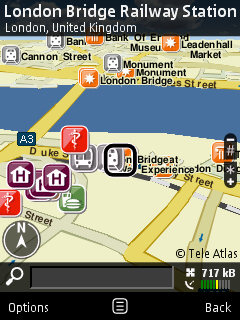
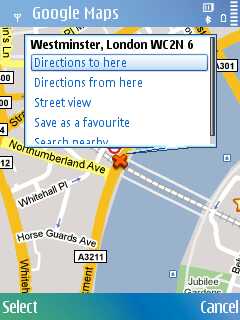
Also much updated since the N96 was launched has been the totally free Google Maps, which made it to v4.1.1 before Google turned their focus to the Symbian-competing Android (will Google ever update Maps for Symbian again? Here's hoping!) The current version has Latitude support, built-in voice searching, Street View, Google Buzz integration and other 'layers' and works perfectly on the N96. See m.google.com in Web to get this installed.
App Store
The rise and rise of the app store has been a feature of the last couple of years, of course. Nokia's Ovi Store didn't even exist when the N96 was launched, but a launcher for it appears in the latest firmware in terms of a redirect from the built-in Download! client. Of course, Download! itself is an app store and predated the iPhone's App Store by a couple of years, but Nokia didn't put anywhere near enough investment in it and it rather withered on the vine. The phone will lead you through the (somewhat time consuming - about 5 mins!) Download!-to-Ovi Store replacement process, as depicted here, but the upshot is that after a few minutes of installation time and after a restart, Download! will have vanished and the Ovi Store icon will have taken its place.
The Ovi Store client works pretty well on the N96, though you're limited to just the applications that work on non-touch S60 3rd Edition devices, of course. Still, that's a healthy few thousand and worth browsing round. Skype, shown here, is just one of the many cross-platform software stars now available for all versions of S60/Symbian.
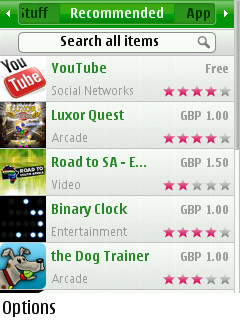
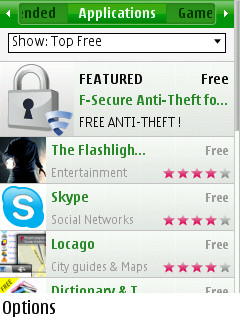
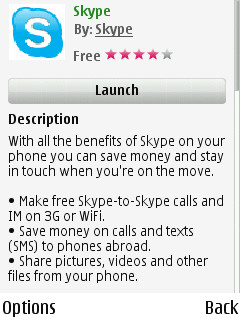
People often talk of the way the S60 interface looks dated in comparison to the mobile OS opposition. But one of the biggest software limitations has been the way email is handled. In fairness, Nokia recognised the limitations of S60's built-in email client ("Messaging") a while ago and have been phasing in their cloud-based take on the concept ("Nokia Messaging"), in which an always online, push-based client syncs neatly to all your traditional and webmail inboxes. Well, that's the theory anyway.
Regardless, I threw caution to the wind and stuck the latest 2010 build of "Email for Nokia - 10 Accounts" (as it's billed in the Ovi Store) on the N96 - and after a lengthy install (which involves a restart of the phone!), it works pretty well. It even handles the small QVGA screen well, without too many limitations.


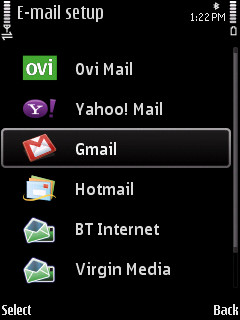
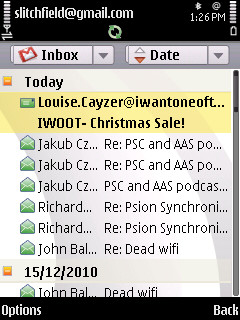

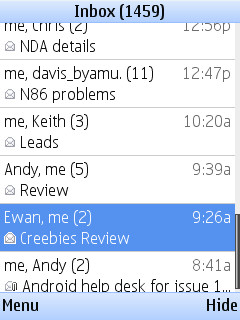
If, like me, your email needs are (day to day) very simple - just Gmail, then you may prefer the tiny but ultra-powerful Java-based Gmail client - if only because you can interact with the full range of Gmail functions, including starring email, adding emailed contacts and searching through four years of email - almost a hundred thousand emails - in a couple of seconds. You can get this now here.
Gaming
The N96 came in at the same time as the second (and final) age of N-Gage, now sadly defunct (again). If you see a reference to N-Gage in the box or in a corner of the software, best ignore it. In addition, the N96 didn't have the general purpose TI OMAP 2420 graphics acceleration chip that powered the N95/N95 8GB and N82, meaning that it couldn't run the 2007/2008 generation of games which needed the chip. So no Oval Racer, no Virtual Pool Mobile and you'll have to resort to less demanding games. There are plenty of less strenuous action games in the Ovi Store, of which my favourite is still the super Micropool, which works really well on the N96.
It's fair to say that the N96 won't ever challenge the new breed of large screened smartphones and their 'HD' games though!
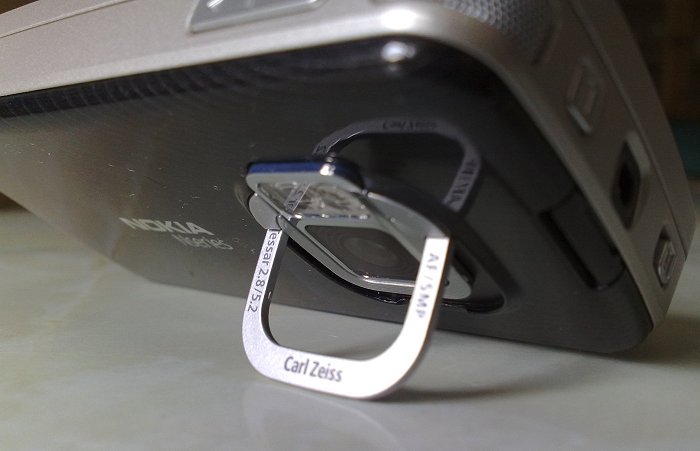
Multimedia
The N96 was the phone that launched "with BBC iPlayer" and remains excellent at playing back almost any kind of video file (DivX excepted) - just plonking video on the mass memory is usually enough, provided the file doesn't have very high resolution or bitrate. Most importantly of all, don't forget the 'kickstand' that's built into the camera surround (shown above) - it's still unusual in the smartphone world and makes a huge difference for casual (breakfast table?) video watching while you get on with other things.
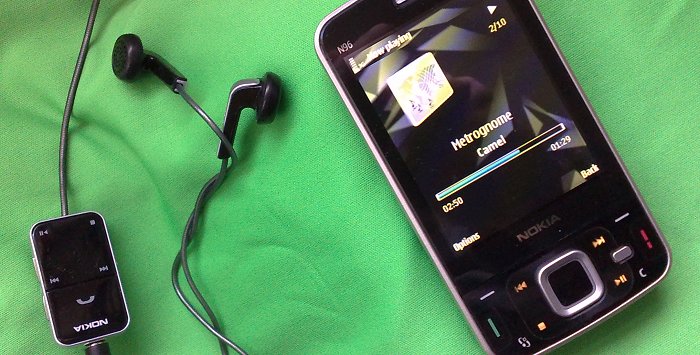
Also really notable - well, about all of Nokia's phones, really, is that they work with the various multimedia headsets, as shown above, with play/pause/stop/back/forwards/volume controls, which means that you can be in complete control of your music and podcasts while your phone stays tucked in a pocket, away from harm. This is a bit of a generic rant, I know, but I never feel that Nokia gets enough credit for this incredibly useful (and not that commonly copied) feature.
Such multimedia controls don't ship with every Nokia phone - presumably they cost a few more Euros each to make - but they do come with the N96 and most other media-centric models - and you can buy them separately (e.g. here) for not a lot, if needed. Seek a set out if you don't already own any!
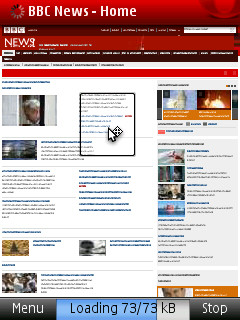 Web browsing
Web browsing
As you might imagine, browsing in S60 Web is slow enough at the best of times, with modern bandwidth-hungry sites - it's even slower on the N96, with its more anaemic processor. Which is why Opera Mini is an instant install, especially now there's a native Symbian version - there's not even the overhead of a Java runtime anymore. Opera Mini reduces even the largest pages to a 70 or 80kb download and makes even the N96 a competent web browsing device. Highly recommended. Get it from m.opera.com and pick 'Opera Mini for Symbian'.
Battery life
As hinted previously, Nokia were a little concerned by the N96's battery life even at launch - the BL-5F is rated at just 950mAh - and the processor is definitely hamstrung by design. In practice, the N96 struggles to make it through a day of heavy-ish use, which is why I can heartily recommend a spare BL-5F or two. Watch out for seller ratings online, by the way, as there are plenty of fakes as well as Nokia originals!
On devices with battery capacity to spare (think Nokia E61i, E71, E72, E52 or E55), I'm used to leaving Bluetooth turned on all the time even though I only use it a couple of times a day. On the N96, I leave Bluetooth turned off by default and keep a shortcut to turn this on from my homescreen if needed. In addition, from 'Settings>Connection>Wireless LAN', I keep Wi-Fi scanning turned off too. In other words, the phone connects to Wi-Fi only when needed - it's not regularly 'sniffing' the airwaves. This seems to me, to be a much forgotten power saving measure!
With these two radio measures in place, I've been quite happy with N96 battery life. As with other smartphones, when travelling into rural areas, I'd also be tempted to dive into 'Settings>Phone>Network' and set network mode to 'GSM' - the hunting for, and connection to weak 3G cell towers is a major, major source of power drain when you're away from the city, in my experience.
Homescreen widgets? You've got to be kidding
The modern trend (in 2010) seems to be to bring as much online information as possible to the phone homescreen. Typically, there would be your latest Twitter feed tweets, the subjects of the last few emails received, the day's weather forecast and any news headlines. Some of this information is present in the S60 3rd Edition FP2 homescreen in embryonic form - for example, the summary of Share online media updates, but things are otherwise quite static.
For the other functions mentioned, I have a shortcut to BBC Mobile set up as one of the homescreen shortcuts - the BBC site remembers my location and so this is a one-click way into both local weather and breaking news - plus there's TV and radio information as a bonus, never far away. Social networking is represented by a shortcut to Trill, the Twitter client that works best on the N96 (Gravity struggles in terms of font size compatibility).
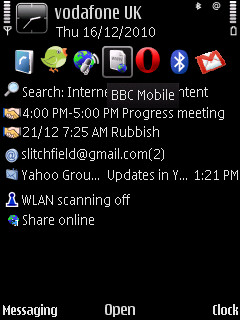
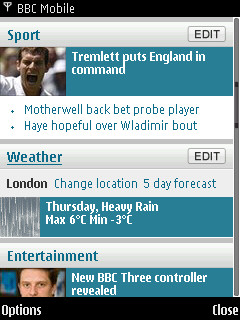
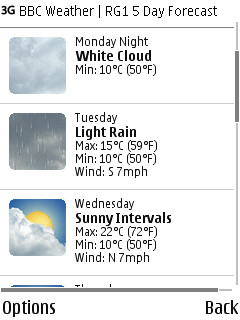
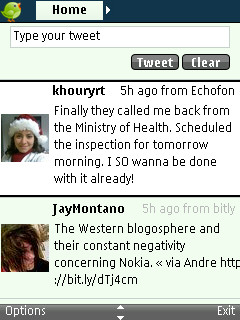
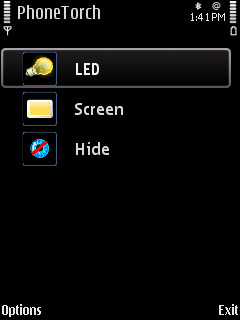
Torch mode?
One of the incompatibilities with general FP2 software is that of control of the dual LED flash - meaning that the standard version of PhoneTorch won't work. But fear not, for 'PhoneTorch N95' works just fine. With the slight caveat that it does have to genuinely dark (or with your finger over the light sensor!) to trigger use and with the other note that the LEDs blink occasionally, it's still a usable solution to find your way home from the pub along icy pavements.
Using a multi-hundred pound smartphone as an LED torch may seem completely over the top, but it's actually a terrific tool - your phone will always be with you, for that 20 second dash to the dustbins in the dark!
_______
Comments welcome if you have your own N96 story - how do you use this smartphone in 2010?
Steve Litchfield, All About Symbian, 16 Dec 2010
